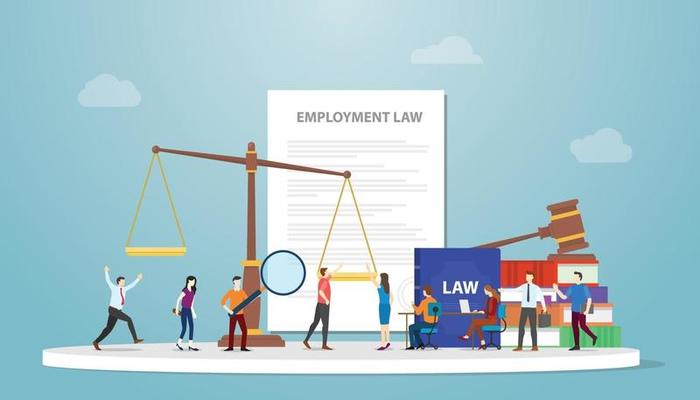With businesses under increasing pressure to tackle widespread skills shortages, HR mustn’t overlook the ways training and development could help.
The growing shortage of skills is becoming a daunting hurdle for businesses to leap, with industries across the board struggling to recruit and retain skilled staff, and HR being increasingly relied upon to come up with answers.
Of course, there are any number of responses that could be experimented with. One that has a chance of proving particularly worthwhile, however, is the revitalisation of training and development practices. A strategy that takes this into account can make roles more appealing to prospective employees, speed up the onboarding process and ensure existing team members feel valued.
Get it right, and this approach may help to tackle the shortage of skilled candidates, all while fostering a real boost in satisfaction, loyalty and productivity amongst existing employees. Get it wrong, however, and businesses risk falling behind in the fight for talent.
This is a crucial time, and one that requires decisive action. With that in mind, here are four reasons HR can’t professionals can’t afford to overlook their training practices …
1. The skills crisis
A Hays report released toward the end of last year suggested that a staggering 93% of employers had struggled to find the staff they needed in 2022. Of course, this figure is concerning in its own right. But when we consider that it was actually an increase on the 86% recorded in 2021 and 77% in 2020, it represents a clear case for HR to consider new approaches in the way they combat what is – undeniably – a growing issue.
Training may offer a solution, with a demonstrable commitment to employee development plugging skills gaps while also helping to attract new talent. Official figures in October showed that there were 1.7 million people in Britain who were not yet active in the labour market but wanted to work. With the right development initiatives, these candidates could help to tackle the challenges it seems so many employers are struggling with.
2. Employee retention
While bringing new talent into the business is vital to combating skills shortages, minimising staff turnover should also be a top priority for HR. Our own research of deskless workers – those in practical, non-office-based roles – found that over two-thirds feel development opportunities have a strong influence on their loyalty to a business. This enthusiasm won’t be limited solely to deskless industries, though. Training will play an important role in boosting commitment and productivity for office-based staff, too.
The demand for effective training and development will only be further accelerated by the number of young people entering the workplace. Our research shows that Gen Z and Millennials place a higher value on ‘opportunities to progress’ and ‘training and development opportunities’ than any other age demographic. When we consider that Gen Zs now account for 20% of the UK workforce – a figure which is growing all the time – it becomes essential that firms meet their expectations if they want to keep up in the race for talent.
3. Digitisation
As well as the workforce, the world of work is also ever-changing. The technology we rely on is evolving constantly, and so, therefore, must the training and development that accompanies it. Last year, 70% of digital leaders felt a lack of skilled workers was preventing them from keeping up with technology trends.
As workplace systems become even more complex, employees should be regularly upskilled and retrained, not only to prevent the business from falling behind, but also to keep them engaged and safe.
4. Safety and compliance
Training plays a key role in keeping staff safe and compliant, something that’s particularly important in industries which are labour-intensive and high-risk, like construction or engineering. For instance, with around 95,000 live vacancies in UK manufacturing last summer, there will be firms that have since seen an influx of new starters.
It’s crucial that these recruits – many of whom may be unfamiliar with the industry – are provided with consistent, robust training, in order to maintain compliance and avoid potential risks.
How can training be delivered effectively?
It’s all too clear that training and development are vital for businesses to thrive. But how can HR deliver it – not just effectively but in a way that meets the unique learning requirements of every worker?
We know that a practical, sustained approach is more effective for long-term learning than one-off exercises, with many studies finding that revisiting learning several times across multiple sessions is the best way to retain information. This is reflected in workers’ own preferences. Our research found that three-quarters of deskless workers prefer face-to-face training, and suspect this pattern would be reflected amongst office workers too.
In recent years, there’s also been a steep rise in the use of ‘e-learning’ techniques, often in an attempt to save time and resources. However, online training, which is completed once and in isolation, simply can’t replicate the consistent, repeated practice that is so important for long-term learning.
Employers can’t afford to ignore these preferences by mandating training courses that simply serve as tick-box exercises. Instead, they must choose a training strategy that will best suit the requirements of their workforce.
For HR teams with limited resources, specialised training and assessment software which is designed to support face-to-face learning is a great solution. This kind of approach would serve to eliminate time-consuming, paper-based admin work, while boosting efficiency and freeing up resources to deliver all-important in-person training.
Conclusion
Training and Development is becoming more important than ever before, and HR Professionals must swiftly optimise their existing programmes – all the while, considering employees’ long-term development – if they plan to remedy the growing skills shortage. A blend of face-to-face and online training, using fit-for-purpose technology, will help to build strong, loyal teams that can weather uncertainty and come out thriving.
For more tips on delivering effective training, read Cloud Assess’s advice on how to improve Training and Development.
Rob Bright is CEO of Cloud Assess in the Greater Brisbane area, Australia.


























